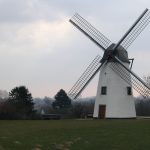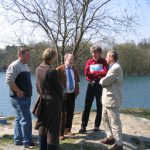Incourt, Wallonia, Belgium
The municipality Incourt has 5,000 inhabitants and consists of seven villages and two hamlets that lie between those Wallonian fields and thoroughfares that connect the European metropolis Brussels and other cities. The location has also influenced its history that was characterised in the sixties and seventies of the 20th century by emigration, the search for work in large cities, industrialisation, abandonment of farming and ever weakening social contacts in the villages.
The inhabitants were aware of the growing problems very early and searched for solutions already in the seventies to preserve the villages and to improve the quality of life in the whole municipality. They decided already in 1978 to introduce pilot development projects that were dedicated in the first instance to increasing social binding and the preservation of living conditions with quality. At the same time these projects influenced the ecological and economical development.
Thus a community house as meeting point for all inhabitants was erected or converted to give room to a flourishing social life. Also the sports facilities for common leisure activities are well kept and prove to be important places of communication.
The central project of the inhabitants of Incourt over the last decades was the utilization of the former quarry site, a large wound with many ruined buildings in the middle of the municipality. The citizens decided to heal the wound by developing a new centre with various functions. Thus a lake was created that today houses various birds and plants and serves the citizens for wonderful walks. An old building was converted to the so-called »House of Nature« and is available to citizens as a consulting and further education centre for all questions concerning energy. And not last an extremely innovative and successful project was realised – a housing estate for all generations that is characterised by neighbourhood help and communal welfare.
The supported council rental flats for young families for a time limit of 6 years should also be particularly mentioned. If they then build in their home town they even receive a quarter of the rent paid back. An excellent idea to encourage the willingness of young people to remain.
The preservation of the cultural heritage and the maintenance of village traditions also enjoys high value. A windmill was authentically renovated and serves as a centre for festivals and presentations of old regional handwork.
All these mosaic stones could be put together to from a colourful picture by the inhabitants of Incourt. The people are happy with their work and are aware that it lies in their hands to create together a residential environment worth living in.
They are in particular proud of that the fact that have managed to retain the rural character of their municipality. They intend to follow this path in the future more intensively. Their new programme period started with numerous working meetings in which they determined the tasks for the next decade: to connect the villages even more together, to emphasize the anxiety about nature, the improvement of job possibilities and to expand the number of flats on offer.
The strength of the municipality Incourt undoubtedly lies in its inhabitants who are prepared to voice their opinion and in a communal management that is interested in the needs of the citizens and is also qualified to solve problems and implement projects.
Incourt is characterised by a distinctive citizen participation and pilot projects regarding the strengthening of the social binding of the inhabitants, the preservation of living conditions of high quality and the ecological and economical development.
Evaluated: 2008





